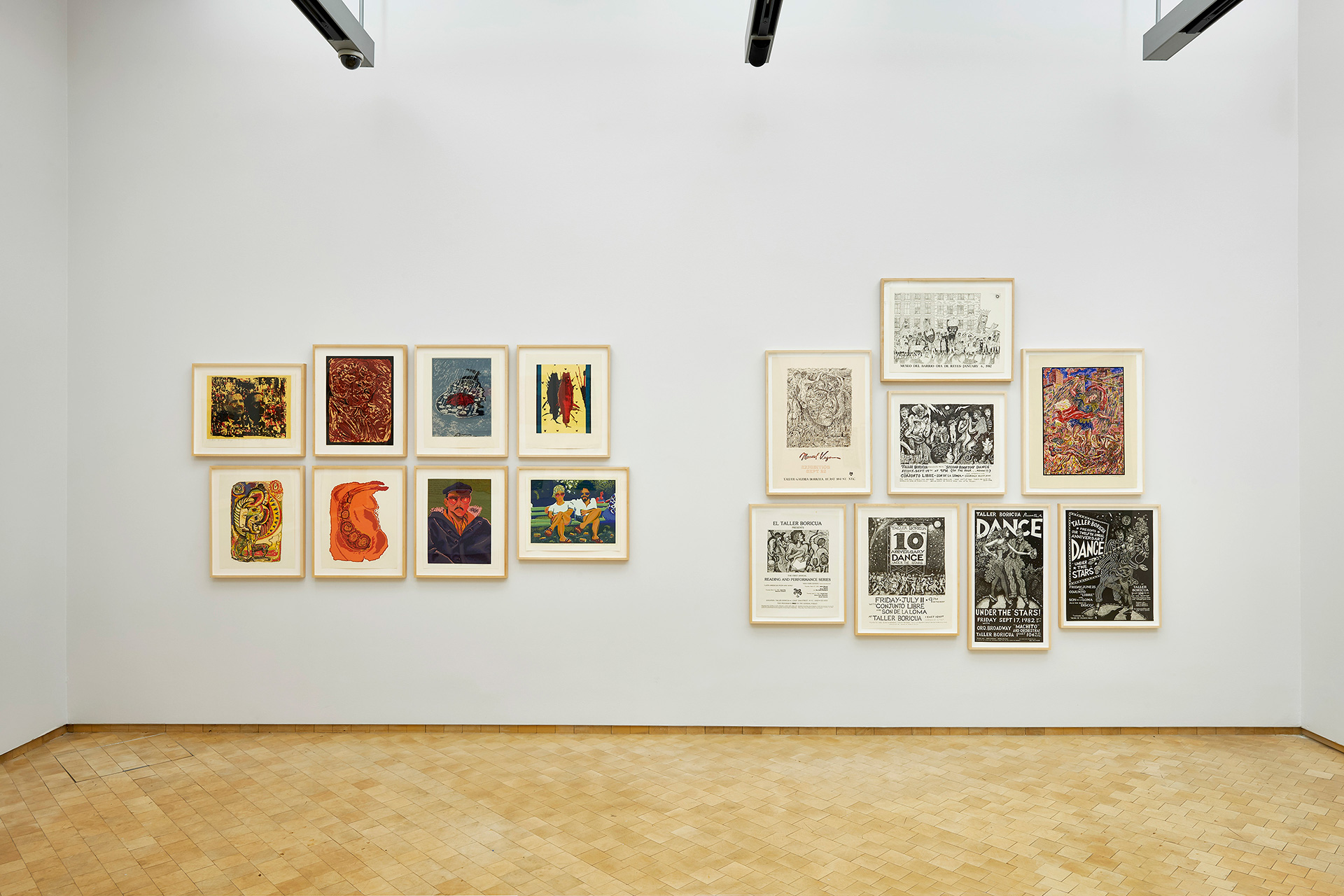

3 — Designing The Movement
In the 1970s, the Puerto Rican presence in New York City experienced an apex, leading to the consolidation of community enclaves like East Harlem and the Lower East Side. This demographic shift had a major impact, permanently transforming the cityscape in different ways – from the creation of street murals to written and spoken language to new colors, sounds, and tastes. This section of the exhibition documents this process through graphic commissions designed and printed by Taller Boricua for Puerto Rican cultural and political activities such as conferences, festivals, and demonstrations. In this group, we also see posters created for theater groups, such as Teatro de Orilla and Teatro Jurutungo. The play ¿Este tren para en Delancey? [Does this train stop in Delancey?], for instance, consisted of a series of short scenes about the life of Puerto Ricans in New York, whose title refers to the subway station on the Lower East Side. Another large grouping of works retraces Taller Boricua’s moves between various locations in East Harlem, as well as their exhibitions and educational activities. The Portafolio de gráficas: primero [First Graphic Portfolio] was an important project created by Marcos Dimas, Gilberto Hernández, Fernando Salicrup, and Jorge Soto Sánchez, offering poetic visions of history, community, and the city. Also on view are several works by Manny Vega, an artist-in-residence during Taller’s days in the Heckscher Building.

Taller Boricua’s artists exhibit their work in Central Park, c. 1975
Photographer unknown. El Museo del Barrio Archive, New York

IN CELEBRATION OF
Over the course of its five decades of existence, Taller Boricua acknowledged milestones through special portfolio projects and celebratory events. In 1979, to mark its tenth anniversary, the group issued its first limited edition portfolio with prints by Marcos Dimas, Gilberto Hernández, Fernando Salicrup, and Jorge Soto Sánchez. Here presented as a complete set, each artist’s individual esthetic style is evident, from Hernandez’s groovy imagery to Soto Sánchez’s unique, quasi-surrealist style. Shown at the other side of the wall, Manny Vega’s works were developed during the younger artist’s residence at Taller Boricua. These posters were created to announce special events held at both Taller and El Museo del Barrio. Distributed across El Barrio, they include posters for the Three King’s Day Parade as well as the beloved rooftop dances that took place at the Heckscher Building, once home to both organizations, and where El Museo continues to be located today. Vega’s trajectory is highly identified with East Harlem, where he first worked as an apprentice on Hank Prussing’s mural on East 104th Street and Lexington Avenue, before creating his own mosaic murals in several locations in the neighborhood, including the 110th Street subway station.


